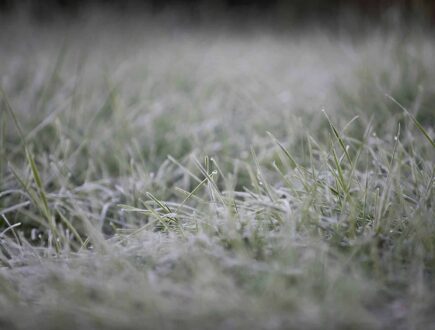Log in or create new account to save this product to your wishlist.

How To Get Rid of Japanese Knotweed Effectively
Learn to recognise Japanese knotweed quickly and control it effectively. Prevent damage to your garden with our tips for safe removal.
🌱 All important maintenance moments for your lawn during the year. Leave your email and we will send you the lawn calendar for free.
Enter your email
Receive the lawn calendar in the mail
Enjoy a green lawn all year round!

- Order by 2PM = shipped today
- 250.000+ satisfied customers!
- 60 day satisfaction guarantee
Have you spotted Japanese knotweed in your garden or on your property? If so, it’s essential to take action as soon as possible. This weed is highly damaging and difficult to eliminate.
In this blog, we’ll delve into how to identify Japanese knotweed and the impact it has on its surroundings. You’ll learn various methods to control Japanese knotweed and discover what you absolutely shouldn’t do.
Japanese knotweed: a danger
Japanese knotweed (Fallopia japonica or Reynoutria japonica) belongs to the knotweed family (Polygonaceae). It is an invasive species increasingly common in the UK. This fast-growing plant has a significant impact on local ecosystems and can cause considerable damage to buildings and infrastructure.
Its extensive root system can grow through concrete, asphalt, and foundations, leading to cracks and damage. Identifying and controlling Japanese knotweed is therefore crucial for both homeowners and green industry professionals.
Recognising Japanese knotweed
Recognising Japanese knotweed is crucial for effectively controlling this invasive plant. It has distinct characteristics that set it apart from other species.
Stems and leaves
Japanese knotweed is a striking plant. It can grow to a height of 1.5 to 3.5 metres. Its bamboo-like stems are hollow and upright, with distinctive reddish-brown spots.
The leaves are leathery, thick, and sturdy, with a broad, egg-shaped form. Leaf length varies between 10 and 18 centimetres. In spring, the leaves are fresh green with red veins and alternate along the stem, giving the plant a recognisable structure.

Flowers
Japanese knotweed blooms from July through September, producing small cream-white to pale pink flowers that grow in clusters, lending the plant a decorative appearance. But don’t be deceived: the damage it causes is substantial. We’ll return to this later.

Root system
Though not directly visible, the root system plays a major role in the growth and spread of the plant. The roots can grow very deep—often up to two metres and sometimes even three. This deep root system makes it difficult to eradicate the plant and contributes to its invasive nature.
The roots and stems thicken each year, making the plant increasingly robust. Even a tiny piece of root can grow into a fully-fledged plant.
Difference between knotweed and Japanese knotweed
In addition to Japanese knotweed, other invasive species are also found in the UK:
- Hybrid knotweed
- Giant knotweed
- Himalayan knotweed
There is also a common knotweed, a popular border plant with red flowers in narrow spikes. There are cultivars of common knotweed with pink and even white flowers.

Japanese knotweed (which also bears white flowers) is generally larger, has bigger leaves, and causes significantly more damage.
Damage caused by Japanese knotweed
Japanese knotweed has a severe impact on the natural environment. This invasive species poses a serious threat to biodiversity and disrupts ecosystems.
Displacement of native species
Japanese knotweed can establish itself on various soil types and in diverse habitats. Through its rapid growth and formation of dense foliage, it overgrows other plants, leading to the displacement of native plant species, which poses a direct threat to local flora.
This invasive weed doesn’t only affect plants. It also leads to a reduction in invertebrates, such as wood ants, butterflies, and insects, in areas where it dominates, negatively impacting overall biodiversity.
Ecosystem disruption
Its presence disrupts ecological balance. The plant affects its habitat by capturing organic material and nutrients, altering soil composition and impacting other organisms reliant on specific soil conditions.
Long-term effects
The long-term effects of Japanese knotweed are concerning. Although it hasn’t yet directly caused species extinction, there are indications that it may only be a matter of time.
The economic impact is also considerable. It causes damage to infrastructure and buildings, leading to high repair and maintenance costs. Additionally, controlling the plant incurs extra costs for monitoring, public information, and aftercare.
Controlling Japanese knotweed
Various methods are available to control this pernicious weed. The control process is lengthy, requiring patience and persistence. It is crucial to act immediately if you spot a shoot.

Digging out and covering
A useful method for the home gardener is digging out the Japanese knotweed. Begin by cutting back all the large stems and work from the outside in, starting at least 50 cm away from the plant.
Preferably use a fork instead of a spade to avoid breaking the roots. It’s vital to remove as many roots as possible, as even small pieces can grow into new plants.
After digging, it’s advisable to leave the area open for a few weeks to spot any remaining roots. For larger areas, covering with a strong, impermeable tarp can be an option, though this requires patience as the tarp needs to remain in place for three to five years to suffocate the plant completely.
Repeated mowing
Although mowing alone is insufficient to remove Japanese knotweed, it can help to weaken the plant. It’s worth noting that this involves cutting rather than regular (mechanised) mowing, as standard mowing can increase the risk of spreading.
Cut the plant regularly, ideally every two weeks during the growing season. This process can take years before the last shoot disappears. Be sure to collect and dispose of cuttings carefully to prevent spreading.
Natural control
There are various natural methods that individuals can try, although their effectiveness varies. Some people use boiling water to douse the plant and roots, but without root removal, this has limited effect.
An intriguing approach involves using grazing pigs, which eat Japanese knotweed. However, this control method may take years. Moreover, allowing pigs into your garden isn’t practical, but for larger areas, the results are promising.

The use of vinegar as a control agent is sometimes mentioned, though its efficacy is unproven scientifically. Additionally, controlling Japanese knotweed with vinegar may have other negative effects. Acetic acid could pose a risk to plants adjacent to the sprayed area and to soil organisms.
It’s important to remember to dispose of all plant material, including roots and stems, carefully. Never place them in the compost bin but dispose of them with general waste to prevent further spread.
Professional control and legislation
For effective Japanese knotweed eradication, it’s often necessary to seek specialised help.
Specialist control methods
Professional companies have access to advanced techniques and products that are unavailable to the public, such as electric shock treatments or injections.
Reporting requirement and enforcement
For works on council-owned land, there is often an inspection and reporting requirement. This means the site must be checked for the presence of Japanese knotweed, and any findings must be reported. These measures aim to limit the spread of the plant and coordinate its control.
Understanding your legal responsibilities in regards to knotweed growing on your land is crucial should you wish to avoid an unexpected date in court or a run-in with your local council.
How to get rid of Japanese knotweed: conclusion
Japanese knotweed is a highly invasive plant that can cause significant damage to buildings, infrastructure, and natural ecosystems. It’s a tenacious plant that is difficult to control, so you may need to enlist professional help. Always remain vigilant after treatment for any new shoots and act immediately if growth is visible.
Looking for more gardening inspiration or advice? View more articles on weed control or read our other articles for tips and advice.
-
Zero-Waste Gardening – This is How You Do It!Did you know that the average person wastes between 100 and 150 kilos of food every year? That's why the concept of zero-waste gardening is becoming increasingly important for environmentally conscious gardeners that like to do their gardening greener.Read more
-
How to Master Tree Pollarding: A Practical GuidePretty dense! What might be an insult to some, is certainly a compliment to trees. Through pollarding, you can make sure, your trees have a dense crown of beautiful leaves.Read more
-
Get Ready: Here are 5 Garden Trends for 2025Curious about the latest garden trends for 2025? From smart solutions to sustainable choices, discover all the outdoor trends that are transforming British gardens!Read more
-
How to Care for Plants in Winter: A Simple GuideWhen winter comes around, the care requirements of your plants change. Find out, how to adjust the care routine for your plants.Read more
-
Companion Planting Made Easy: A Step-by-Step TutorialStrategic plant partnerships can solve common gardening problems like pest invasion and disappointing yields. Find out which plants are great together in our companion planting guide.Read more
-
How to Grow Sweet Potatoes in Your GardenWant to know something splendid? A single sweet potato plant can produce 5 to 10 pounds (4.54 kg) of nutritious tubers—plenty to keep your family’s pantry well-stocked for weeks!Read more
-
Revive Your Lawn After Winter With These Easy StepsTired of winter lawn damage? Discover how to repair brown spots, remove weeds, and revitalise your grass for a thriving garden this spring.Read more
-
A Complete Guide On Lighting for Your House PlantsAchieve perfect lighting for houseplants! This guide covers light mapping, plant placement, and grow light tips to help your plants flourish indoors.Read more
Leave a comment
Your answer will be displayed on the site and the interested party will be notified by email.
Leave a comment
Have a question or want to share your experience? Leave us a comment.

- Order by 2PM = shipped today
- 250.000+ satisfied customers!
- 60 day satisfaction guarantee

- Order by 2PM = shipped today
- 250.000+ satisfied customers!
- 60 day satisfaction guarantee

🌱 All important maintenance moments for your lawn during the year. Leave your email and we will send you the lawn calendar for free.
Enter your email
Receive the lawn calendar in the mail
Enjoy a green lawn all year round!






















Comments (0)
There are no comments yet. Well then, what are you waiting for to
Be the first to write your comment!inaugurate this pretty page?
Do you have some comments?